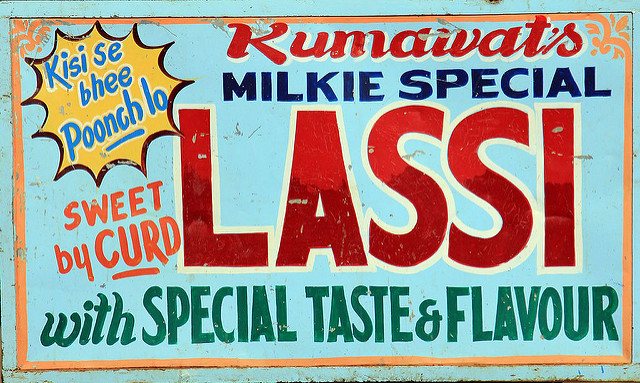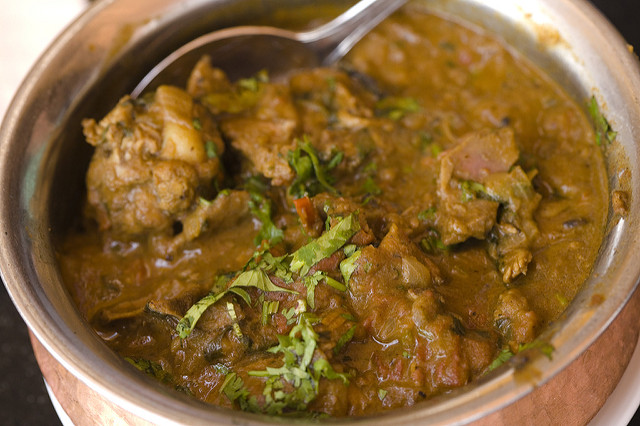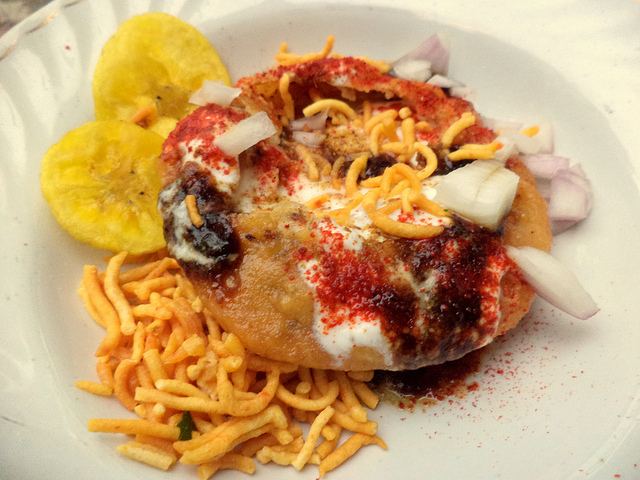Fine Dining in Hindi Posted by Rachael on Jun 8, 2018 in Uncategorized
When visiting India or even trying out your local Indian restaurant here in the States or in the many other countries across the globe where the Indian diaspora has made a home away from home, it will be immensely useful and admirable to be able to speak in Hindi. If your servers are Hindi speakers, they will be impressed with your knowledge of the language and culture when you order in Hindi and demonstrate your familiarity with some basic dishes that appear on most Indian menus. So, without further ado, let’s learn!
तो, बिना देर किए, हम सीख लें !
What would you like to drink?
आप पीने के लिये क्या चाहिये ? / Aap peene ke liye kyaa chaahiye?
*Notice the use of “आप/aap” only here––a server would never address you as “तुम/tum” because that is overly informal and familiar unless, of course, you know that particular server well. Likewise, if you wish to be polite, you can use आप/aap with servers and others working in service-oriented professions, although this degree of politeness is not expected from a customer in India.
Common Responses / आम जवाब:
- मुझे चाय चाहिये / Mujhe chaay chaahiye (I want (hot) tea).
- मेरे लिये पानी चालेगा / Mere liye paani chalegaa (Water will do for me).
- पीने के लिये क्या क्या है आपके पास ? / Peene ke liye kyaa kyaa hai aapke paas (What all do you have to drink)?
- हमें वाइन/बीर का मेन्यू दे दीजिये / Hume wine/beer ka menu de dijiye (Please give us the wine/beer menu).
- मुझे कुछ नहीं चाहिये / Mujhe kuch nahin chaahiye (I don’t want anything).
पीने की चीजे़ं
- (मसाला) चाय (masaalaa chaay): Chai (fem. noun) is a hot, milky black tea that is sometimes served only with sugar (चीनी, fem.) and some cardamom (इलायची, fem.) and ginger (अदरक, masc.), but can be served as a “hot, spicy tea,” (मसाला चाय) my favorite kind, with a plethora of spices, such as those listed above in addition to ground cloves (लौंग, masc.), cinnamon (दालचीनी, fem.) and black peppercorn (काली मिर्च, fem.). Different regions have their own variations of the classic चाय, such as the Tibetan butter tea popular in places like Dharmshala (where the Dalai Lama lives) and the Bengali लाल चा/লাল চা, which is made with black tea (called “red tea” because of the appealing red color of the tea leaves steeping in hot water) combined with milk and sugar, but you are unlikely to find most “exotic” variations in Indian restaurants in the States.
- लस्सी : Lassi is a thick, yogurt or curd-based (दही, masc.) drink that can take on a variety of flavors. You can get just a plain lassi with sugar in it, or a salty one (नमक की लस्सी or नमक वाली लस्सी) seasoned with cumin (जीरा, masc. noun) or even a mango lassi (आम लस्सी) with pureed mango in it.
- कोल्ड ड्रिंक : Cold drinks in India are usually synonymous with sodas. If you get the chance to try Indian soda, I highly recommend the ever-popular “Thums Up,” the refreshing lemon-lime flavor of “Limca” or the orange-flavored “Mirinda.” “Maaza” is also a popular mango fruit juice, though not technically a soda.
Are you ready to order?
आप अपना आर्डर देने के लिये तैयार हैं ? / Aap apna order dene ke liye taiyaar hain?
आप आर्डर करने के लिये तैयार हैं? /Aap order karne ke liye taiyaar hain?
Common Responses / आम जवाब:
- अभी नहीं, हमें थोड़ा और समय चाहिये / Abhi nahin, hume thoraa aur samay chaahiye (Not yet, we need a bit more time).
- मेन्यू में क्या क्या अच्छा है? / Menu me kyaa kyaa acchaa hai? (Which dishes are good on the menu)?
- हाँ, मुझे पनीर टिक्का मसाला, आलू गोबी और पराठे भी चाहिये / Haan, mujhe paneer masaalaa, aaloo gobi aur paraathe bhi chaahiye (Yes, I want paneer tikka masala, aloo gobi and parathas too).
- हाँ, पहले हम शुरू करें भेल पूरी के साथ / Haan, pehle hum shuru kare bhel puri ke saath (Yes, we’ll start off with bhel puri).
- अभी तक नहीं, लेकिन मेरे पास कुछ सवाल हैं / Abhi tak nahin lekin mere paas kuch savaal hain (Not quite yet but I have some questions).
खाने की चीजें
- Now, this is most likely good material for another blog post, but I will go into a bit of detail about the dishes I mentioned above. पनीर टिक्का मसाला basically just refers to small pieces of paneer or a mild-tasting, semi-solid type of cheese. टिक्का just means a small piece and मसाला of course refers to a mixture of spices in the dish’s curry or sauce, which is usually rich (especially in Indian restaurants in the U.S.) and contains घी/clarified butter, cream and pureed tomatoes. This is a good vegetarian option, but for those who are carnivorous, chicken टिक्का मसाला is also a good option.
- आलू गोबी: another vegetarian dish. It consists of sauteed आलू or potatoes and गोबी or cauliflower, cooked in घी/ghee (clarified butter) and a mixture of spices and often coriander (धनिया). It is a hearty dish perfect for vegetarians and non-vegetarians alike.
- पराठा: a popular side dish of thick, unleavened bread with layers throughout it often made from wheat flour or आटा/aataa, as opposed to मैदा or white flour, which is much less healthy but can be made into some particularly tasty parathas as well. It is common for North Indians to choose a variety of bread such as naan, chapati, roti or paratha to break into pieces with their fingers and scoop up the flavorful curries on their plate. Bengalis and South Indians, on the other hand, prefer to do this with rice (चावल), which North Indians also enjoy in addition to some variety of bread (most commonly a रोटी/roti).
- भेल पूरी : this refers to a type of चाट/chaat or sweet and savory snack made of a variety of textures and flavors.
Is everything ok?
सब कुछ ठीक है? / Sab kuch thik hai?
खाना-वाना सब कुछ अच्छा लग रहा है (आप को) ? / Khaanaa-vaanaa sab kuch acccha lag raha hai (aap ko)? Are you liking the food and drink and such?
Common Responses / आम जवाब:
- हाँ, सब कुछ ठीक है / Haan, sab kuch thik hai (Yes, everything’s fine).
- बहुत ही स्वाद/मज़ेदार/मस्त है ! / Bahut hi svaad/mazedaar/mast hai (It’s delicious).
- हमें कुछ और पानी दे दीजिये / दे दो / Hume kuch aur paani de dijiye/de do (Please give us some more water).
- नहीं, मैं अभी भी अपने दिश का इंतज़ार कर रही/रहा हूँ / Nahin, main abhi bhi apne dish kaa intezaar kar rahi/rahaa huun (No, I’m still waiting for a dish of mine).
- नहीं, मेरा खाना थोड़ा ठंडा है, इसे गरम कर दीजिये/दो / Nahin, meraa khaanaa thoraa thandaa hai, ise garam kar dijiye/do (No, my food is a bit cold, please heat it up).

Build vocabulary, practice pronunciation, and more with Transparent Language Online. Available anytime, anywhere, on any device.







Comments:
maryelin catire:
I love the cultures and languages of the world, in my opinion the Indi is a very beautiful and bright language, I have received many help to learn this fascinating language one of them has been hindi fonts and letters, it has been very useful.
Rachael:
@maryelin catire Glad to hear it! I completely agree 🙂